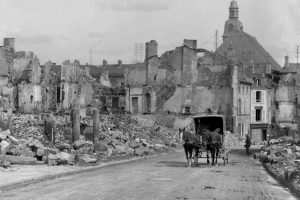Escalation and attrition in the battle for Aleppo
Brian M Downing
A major battle for Aleppo has been coming for many months, delayed by a short-lived ceasefire and preliminary negotiations. There will not be a lasting ceasefire or meaningful talks until the fate of Syria’s once largest city, now in ruins, is determined – if then.
On one side stand the Syrian army, Hisbollah militias, and IRGC troops, all supported by Russian airpower. Arrayed against them are two rebel Islamist formations, Ahrar al Sham and Fateh al Sham – the latter being the former al Nusrah Front which broke from al Qaeda last month. Fateh al Sham is eager to demonstrate its effectiveness, if not its indispensability.
The battle is underway in earnest now and it’s likely to escalate into a major engagement. Will it be a decisive one as was Waterloo in 1815, or a bloody but indecisive one as was Verdun in 1916?
Government forces
The Syrian army’s condition is difficult to know. We are allowed to see only images of soldiers celebrating a victory. Their clean faces and tidy uniforms betray to all but the unwary that the images come from a propaganda mill in Damascus – and a rather amateurish one at that.
Much of the prewar army was Sunni. The Shia government deemed them unreliable once the uprising began in 2011 and most are confined to garrisons. The bulk of the fighting has been done by Shia troops. No reliable casualty figures are available but they’ve been fighting for five years and are stretched thin. Aleppo can be reinforced only by weakening key positions around Idlib, Deraa, and Palmyra.
Hisbollah fighters helped turn the tide years ago and, judging by observed burials in Lebanon, have taken heavy casualties. So have the 2000 or so IRGC troops that entered the war last fall. Iran, a country of 75 million, will be likelier to send reinforcements. Tehran cannot lose one of its few allies and it must demonstrate to foreign powers and domestic insurgents alike that it has a formidable army.
Russia will try to tilt the battle in Damascus’s favor. It will maintain its advisers with Syrian troops, and perhaps send more, but introducing regular combat units isn’t likely. Moscow’s escalation will take the form of sending more fighter aircraft to Syria.
Rebel forces
The opposition is also capable of escalating the fight. This has already taken place as rebel forces from Idlib province to the west have broken the government siege around Aleppo.
Rebel forces face troubles not found on the government side. They cannot move about openly for fear of Russian and Syrian aircraft. Fixed positions are also vulnerable. Further, they are more heterogeneous than the government side and do not have a unified command structure. Ahrar al Sham, for example, is an umbrella organization comprising a dozen or more militias.
Rebels can benefit from timely supplies of more sophisticated weaponry from foreign powers, perhaps including Manpads to counter government airpower. The US is unlikely to provide them, but the Saudis have long promised Chinese Manpads and might finally make good. Government helicopters are especially vulnerable to these shoulder-fired weapons.
Israeli jets have struck Hisbollah positions and supply convoys. It might be tempted to strike them around Aleppo, or in support of rebel drives around Deraa and Damascus that seek to draw off government troops from the north. The battle for Aleppo will increase fighting throughout the What was once Syria.
Waterloo or Verdun?
Many battles are decisive. One side inflicts such a crushing defeat on its adversary that the latter is no longer able to continue the war – Wellesley and Napoleon at Waterloo, for example. The considerable foreign support available to each side makes this unlikely.
 Other battles seek not to quickly overwhelm the enemy, but to slowly inflict tremendous casualties that eventually cause collapse. This was the German plan for the battle of Verdun in 1916, the third year of the Great War. Similar thinking may figure on both sides in the Syrian war: send more and more troops and supplies into the fight for Aleppo until the other side falls apart. The Syrian army may be nearing its breaking point.
Other battles seek not to quickly overwhelm the enemy, but to slowly inflict tremendous casualties that eventually cause collapse. This was the German plan for the battle of Verdun in 1916, the third year of the Great War. Similar thinking may figure on both sides in the Syrian war: send more and more troops and supplies into the fight for Aleppo until the other side falls apart. The Syrian army may be nearing its breaking point.
However, the architects of the battle at hand could be as mistaken as the Berlin generals were in 1916. They may be about to receive an education before Aleppo. The Battle of Verdun lasted most of 1916. Over three hundred thousand soldiers died, and the war lasted another two years when the German army began to disintegrate. Shell craters and trench lines remain to this day. Aleppo is already in ruins.
Copyright 2016 Brian M Downing
Brian M Downing is a national security analyst who has written for outlets across the political spectrum. He studied at Georgetown University and the University of Chicago, and did post-graduate work at Harvard’s Center for International Affairs.